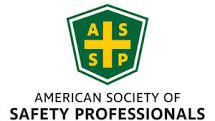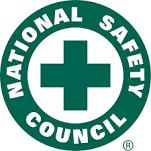President’s Path Out of the Pandemic Adds Hurdles for Employers | FIRST, VERIFY
By: Catherine A. Cano, Patricia Anderson Pryor, Tara K. Burke, Courtney M. Malveaux, Cressinda D. Schlag, Leslie A. Stout-Tabackman, and Katharine C. Weber
On September 9, 2021, the White House issued Path Out of the Pandemic: President Biden’s COVID-19 Action Plan. The Plan outlines a six-pronged approach, portions of which will impose new obligations on employers across the country.
Most notably for employers, the first prong of the Plan, “Vaccinating the Unvaccinated,” includes:
- Direction to the Department of Labor’s Occupational Safety and Health Administration (OSHA) to issue an Emergency Temporary Standard (ETS) requiring all employers with 100 or more employees to ensure that all employees are fully vaccinated or able to produce a negative COVID-19 test result on at least a weekly basis;
- A new Executive Order that requires certain government contractors to comply with guidance, to be published later this month by the Safer Federal Workforce Task Force (Task Force Guidance or Guidance), which presumably will require that employees who work on or in connection with certain government contracts be vaccinated, regardless of whether they work on a federal site;
- A statement that the Centers for Medicare & Medicaid Services (CMS) will be taking action to require COVID-19 vaccination for workers in most health care settings that receive Medicare or Medicaid reimbursement as a condition of Medicare/Medicaid reimbursement (similar to what was previously announced by the President in August 2021 for nursing homes); and
- Direction to OSHA to require covered employers to provide paid time off for employees to get vaccinated or recover from vaccination.
The Plan also calls on states to adopt vaccination requirements for all school employees as part of the effort to “keep schools safely open.”
The Plan indicates that the administration will increase the amount of COVID-19 testing by ramping up production of testing products, offering at-home rapid COVID-19 tests at cost through certain retailers, and expanding free testing at retail pharmacy sites, among other things.
While the Plan is far-reaching, there are still many unknowns. Employer obligations arising from OSHA’s ETS will be dictated by the timing and the specific ETS provisions and corresponding requirements. The only thing we know for certain about the forthcoming ETS is that employers will need to continue to adapt and be prepared to pivot if necessary. It is also unclear how the new ETS will fit in with OSHA’s current COVID-19 Healthcare ETS, in 29 C.F.R. 1910 Subpart U, or impact OSHA’s current guidance for non-healthcare employers. Further, the 27 states with OSHA-approved State Plans, such as California, Washington, Oregon, and Virginia, will need to determine how to respond to the ETS, once it is issued, and if certain provisions require implementation alongside the state’s standards and regulations.
CMS also issued a press release urging Medicare and Medicaid-certified facilities to “make efforts now to get health care staff vaccinated.” However, the agency noted that it is still developing an Interim Final Rule with Comment Period that will be issued in October.
Employers who are impacted by the Plan, and who may be impacted by an ETS once issued, are advised to start thinking through how they will navigate many legal issues and operational challenges related to required vaccination and testing. These issues include policy requirements, workplace testing strategies, vaccination tracking and management, medical record collection and retention, and accommodations for religion, disability, and pregnancy, as well as wage and hour implications, bargaining obligations for unionized workplaces, employee confidentiality, and privacy issues.
Further, employers should consider the logistical impact on federal contracts and how these obligations will interplay with other state or local mandates or restrictions on vaccinations.






